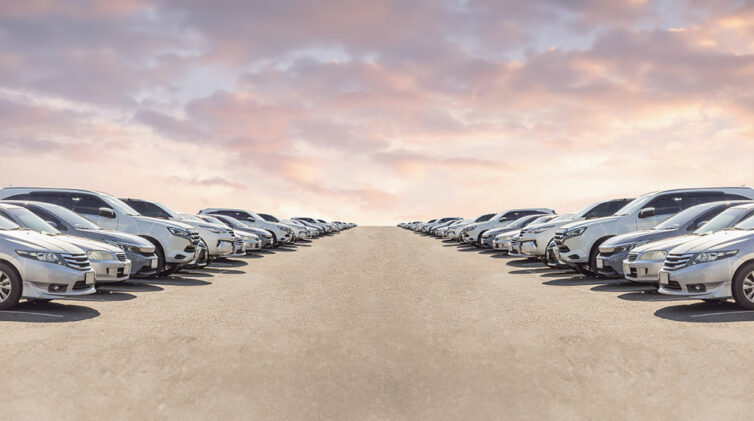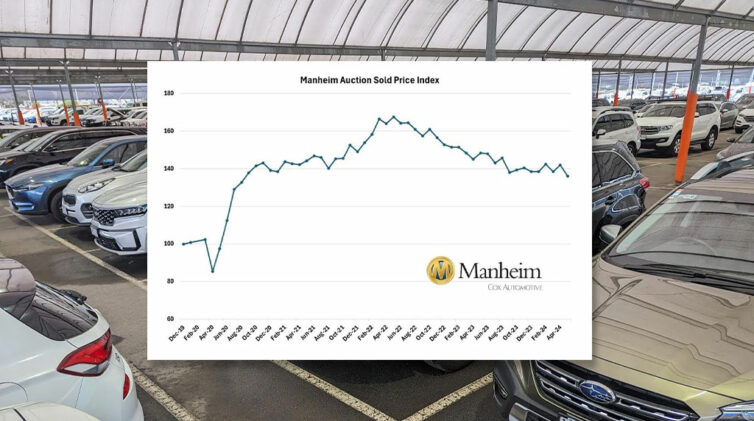Hyundai Motor Company Australia (HMCA) said it has spent more than $10 million to launch this single new model. It’s up for further launch expenditure this year when Australia gets the 202kW high-performance N version of the i30, a major facelift for the Sonata, as well as two brand new entrants in the small-SUV Kona and the hybrid (and for the future, all-electric) Ioniq hatchback.
First up is the i30 in its third-generation “reinvented” form, the description used to power the i30 on from its previous Australian success as competition in the small-car segment tightens.
Australian sales of the i30 since its 2007 launch have exceeded a quarter of a million units – 254,792 at last count – and this country is Hyundai’s biggest market for the model.
But it is facing new pressures. At the dealer launch of the i30 in Sydney this month, GoAutoNews Premium was invited by HMCA to attend a day-long briefing of the new car. Some aspects – including an innovative buyer test program and new technology that improves ownership – are embargoed but we will publish these later.
HMCA chief operating officer Scott Grant, at the Sydney launch to dealers, said the i30 “is very important and the most important event on the calendar”.
“This car underpins everything we do at Hyundai,” he said.
“We have seen a distinct evolution of the company and a road well travelled. The heart of our brand values is dedicated to the idea of ‘Bold Progress’ that has become a way of life to Hyundai.
“It stands for everything we do. It takes us from contender to leader in a very short time.
It is represented by our fuel cell vehicle that puts us in a leading position for the future.
“It has positioned us firmly in the industry and we are now in 20 countries with more than 6000 dealers. Consumers are looking to us and we are delivering.”
Mr Grant said Hyundai is making huge investments continually, including its largest advertising spend with the new global corporate identity.
“We are aiming for better performance in the years ahead,” he said.
“New products are coming and our investment must be matched by your enthusiasm and our customers price in the product. Together, we can take a leadership position.”
Why a new i30? HMCA notes that the crown of the once biggest small-car seller in Australia has slipped. In calendar 2016 it was the second-biggest seller (to Corolla) with an 18.3 per cent share of the segment.
In year-to-date figures ending March 31, 2017, the i30 had a 13 per cent segment share, sliding to third behind the Corolla (20 per cent share) and Mazda 3 (19.5 per cent).
The new model, designated the PD, is a combination of new engineering – including some from Australia – and more features while offering better value for money and a cheaper entry point.
It hits the sweet spot in compact size and contemporary equipment, concentrating on infotainment and safety to maintain its youthful audience but now also lures in middle-aged motorists.
HMCA marketing director Oliver Mann said re-aligning the target market started last year.
“We embarked on a launch program that started with aiming at the 30-50 aged buyer market where we found that most people chose Mazda3 and Toyota Corolla compared with the (outgoing) i30,” he said.
“In our research, the radical redesign of the i30 immediately told these buyers that we were prepared to make dramatic changes to our cars in order to improve them.
“As a result, it was decided that our launch campaign should demonstrate how we have completely reinvented the i30 and added excitement to the lives of the drivers. We wanted to make a big impact – so we did.”
Mr Mann said the Australian car market was “cutthroat” and was “full of capable and competent competitors”.
“To bring a new car to market and rise above that means introducing a more competitive product with advantages in things such as specifications and how it drives,” he said.
But he said that price and safety were the two main reasons that swayed people to buy a particular brand or model.
“After that, buyers are led by image – but of course that means different things to different people. It could be the badge, the driving quality, the interior ambience, and so on.”
On pricing, Mr Mann said: “I guess what we wanted to of is to reset our business model and a list price that was highly competitive and not be in the position where we were discounting the vehicle”.
“So we think the i30 represents unchallenged position – it’s not the cheapest car in the segment but the price represents the best value bar none in this category. So it’s a very, very strong story,” he said.
THE PRICE:
Price reductions of up to $500 and an increase in the feature specifications – up to $5000 in added value – have been introduced to balance the price with equipment levels and to align with rivals.
The $500 reduction on the new base Active manual version, with no options, reduces its price to $20,950 compared with the outgoing Active’s $21,450.
The price list is:
Active (2.0 manual) $20,950
Active (2.0 auto) $23,250
Active (diesel man) $23,450
Active (diesel DCT) $25,950
SR (turbo manual) $25,950
SR (turbo DCT) $28,950
SR Premium (turbo DCT) $33,950
Elite (diesel DCT) $28,950
Premium (diesel DCT) $33,950
Options:
Metallic/mica paint $495
Beige interior (Elite and Premium) $295
Panoramic roof (SR and Elite) $2000
THE CAR:
The new i30, on the market at the end of this month, is longer (by 40mm to 4340mm) than the outgoing model. It is also, on average across the variants, 28kg lighter because of the increased use of ultra high-strength steel that also increases body rigidity by 37 per cent over its predecessor. HMCA said there is one-tonne of Australian iron ore in every i30.
In addition to the extra length, it is 15mm wider and 15mm lower. It has the same wheelbase as before, at 2650mm.
The length has increased the boot space to 395 litres, up from 378 litres, and all models except the SR have a full-size spare wheel. The SR has a space-saver.
Noise, vibration and harshness (NVH) has been reduced by using high-strength steel, hiding the wipers under the trailing edge of the bonnet, reinforcing the dashboard and increasing door rigidity.
The model line up has changed. There are four variants:
- -entry-level Active
- mid-spec Elite
- sports-oriented SR and SR Premium
- flagship Premium
FEATURES:
HMCA has upped the feature list so all versions have factory-fit (previously local fit) satellite navigation and alloy wheels. The dual-clutch and Premium models add an electric parking brake.
Ventilated front seats are available on top-spec models.The SR version is the first – and only – i30 to have independent rear suspension (all other versions have torsion-beam suspension) that was included on request from Australia to improve ride and handling.
The suspension underwent 247 changes in both Korea and Australia from August 2016 until launch as engineers sought a balance of handling, ride and NVH. The engineers cleverly designed the boot so there was no luggage room lost with the independent rear suspension SR version.
All versions have a newly calibrated electronic stability control (ESC) system. The new i30 represents the first time that Australian engineers have been given access to tuning both the ESC and the suspension to reduce the ESC’s intrusiveness and make it a better car to drive.
THE DRIVETRAIN:
There are three engines:
- Active: 124kW/201Nm 2.0-litre GDI (gasoline/petrol direct-injection) aspirated engine rated at 7.3 litres per 100km. It has a service interval of 15,000km or 12 months
- Active, Elite and Premium: 100kW/300Nm 1.6-litre turbo-diesel rated at 4.9L/100km. Service intervals remain at 10,000km/12 months and a lean nitrous-oxide trap has been added to complement the existing diesel particulate filter.
- Elite, SR and Premium: 150kW/265Nm 1.6-litre turbo-petrol. Service intervals have been extended to 10,000km/12 months (previously 7500km/6 mths).
There are three transmissions – six-speed manual (2.0 and diesel), six-speed automatic (2.0) and seven-speed dual-clutch transmission (DCT) for the 1.6 turbo-petrol and the diesel.
TECHNOLOGY:
The i30 includes the “must-have” infotainment features such as satellite navigation, Apple CarPlay and Android Auto connectivity, and smartphone wireless charging (Android now, Apple soon). It has an alert function when a mobile phone has been left inside the car.
Smart key and push-button start/stop can remotely open and close all windows and even has a function that allows the car to start even when the key fob battery is flat, as well as a “sleep” mode to extend battery life.
A 4.2-inch colour TFT display within the instrument panel is offered on high-end versions while the other models have a mono 3.5-inch LCD readout.
SAFETY:
All new i30s have seven airbags, a tyre pressure monitor and reverse camera with parking guides. HMCA said it is targeting a five-star Euro NCAP rating and a high pedestrian figure because of its 25mm longer front overhang.
Smart Sense safety pack is fitted to the top-end versions. It includes autonomous emergency braking (AEB), lane-keep assist with steering wheel input, rear cross-traffic alert, blind-spot monitor and active cruise control. The pack will be offered as an option on the Active before the end of the year and pricing will be announced shortly.
By Neil Dowling



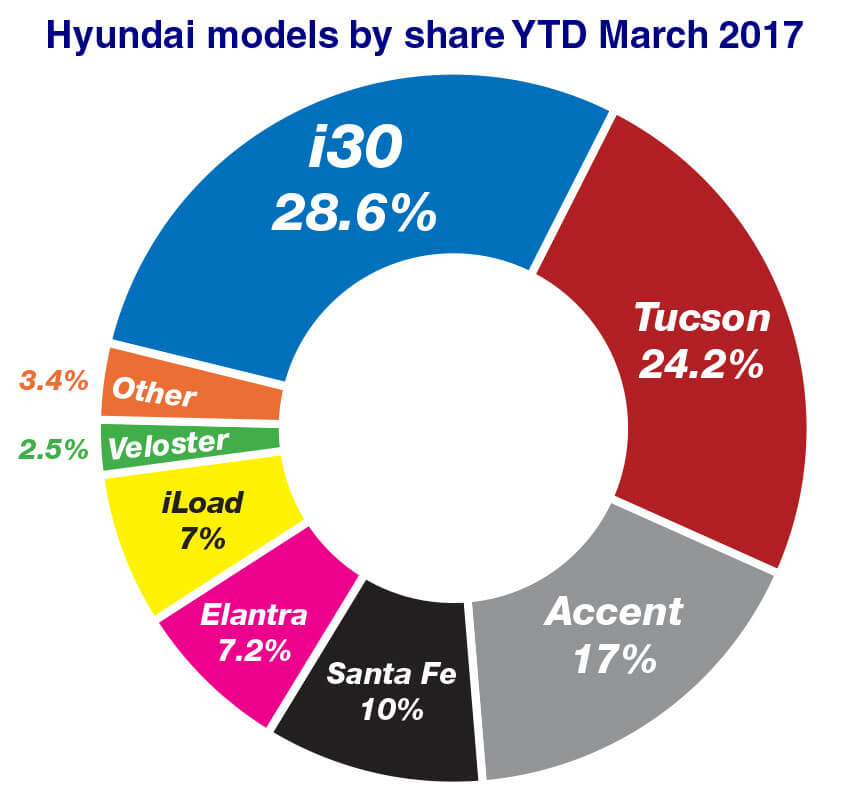


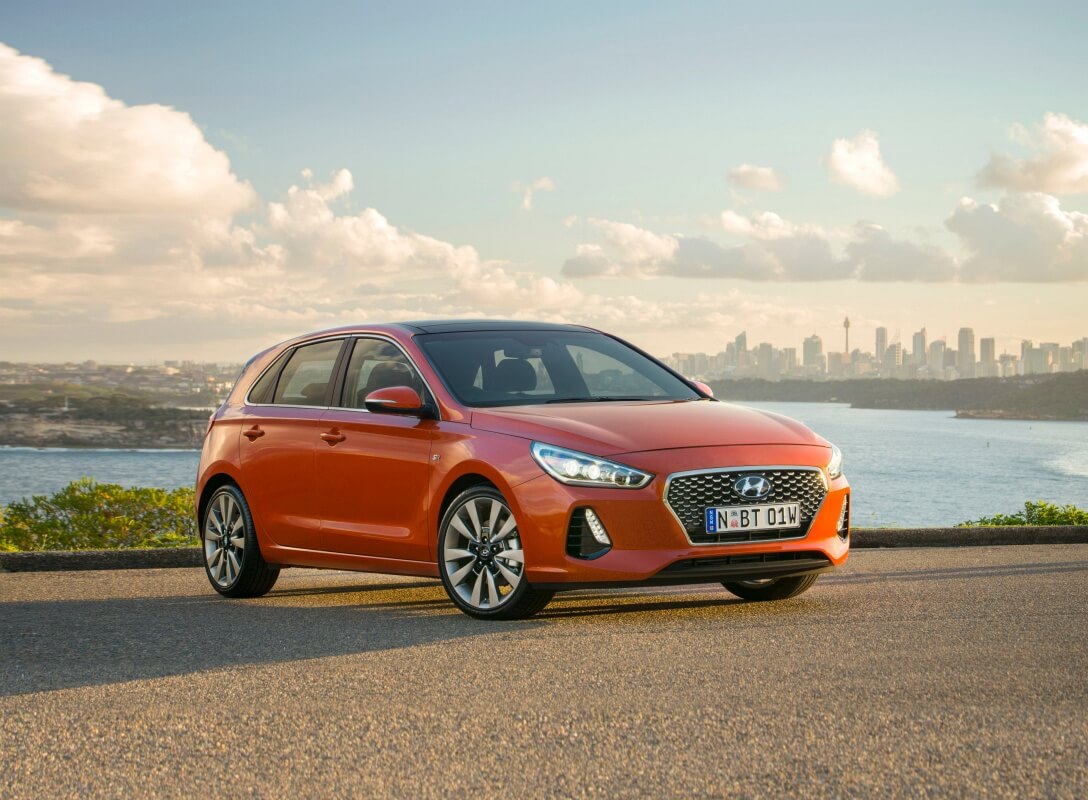




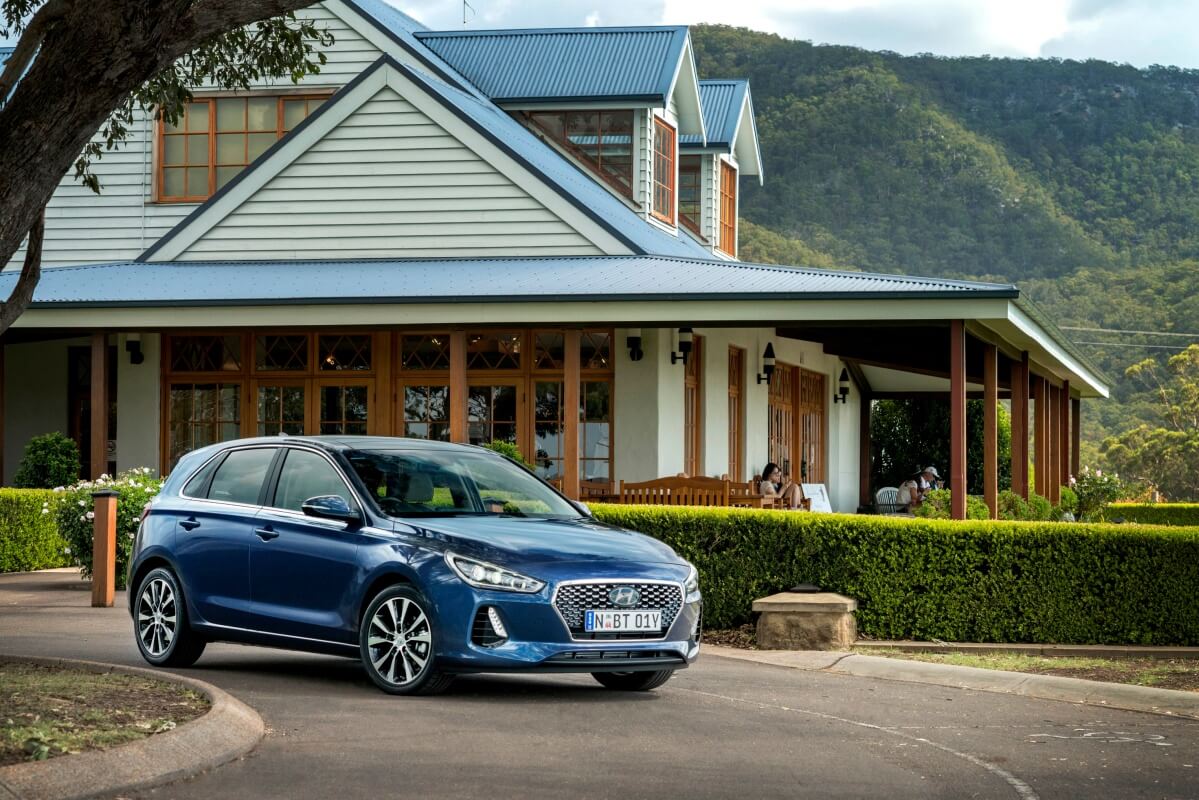


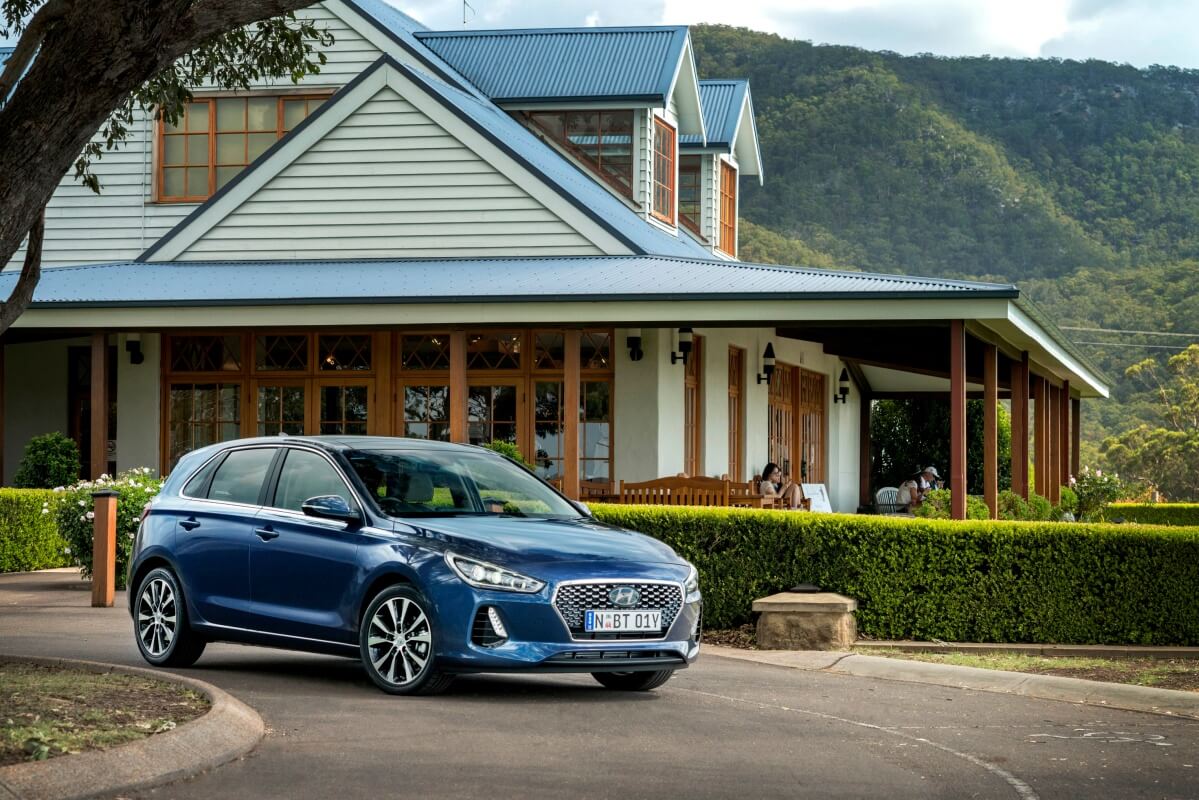
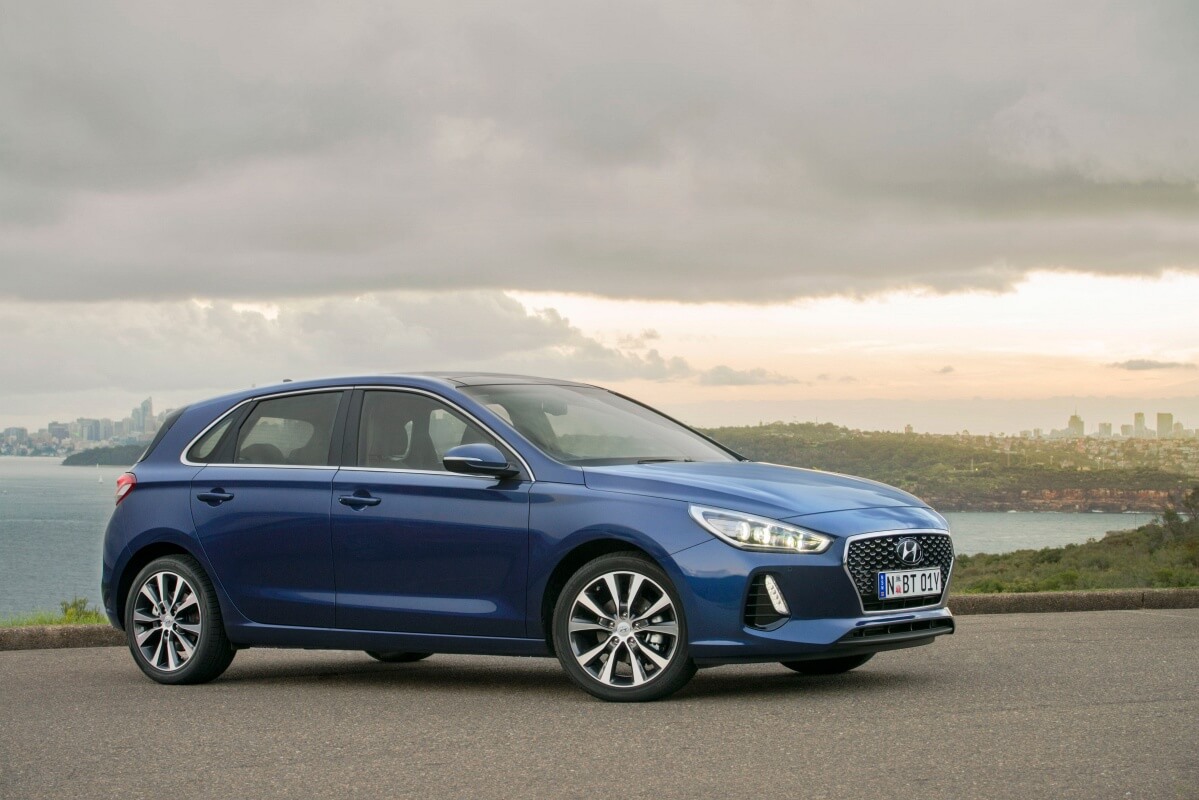



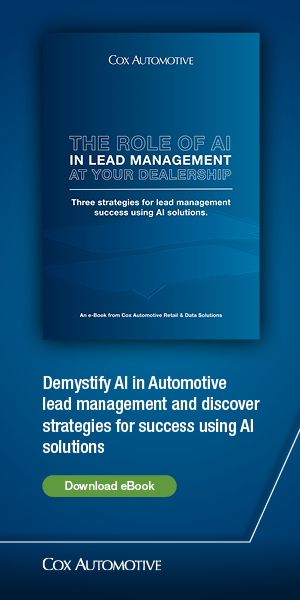









 Read More: Related articles
Read More: Related articles
